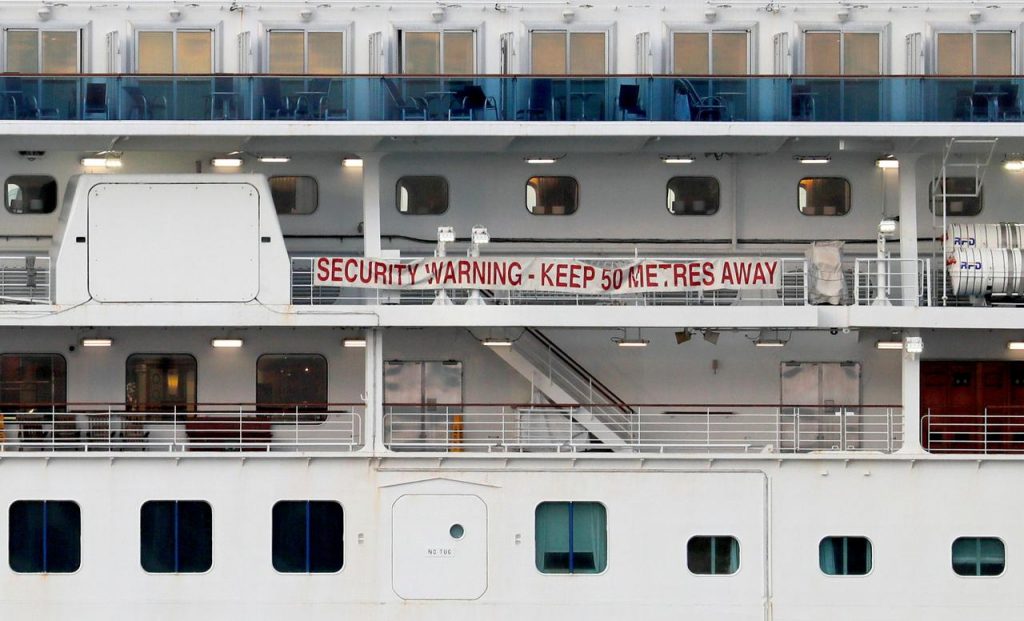
- ARAB NEWS
- 09 Jul 2025

The mistaken release of a coronavirus (COVID-19) patient into public in San Diego for several hours following a two-week stint on a quarantine ward is testimony to several facts. One is that there needs to be quality control across the board, as COVID-19 is highly likely to increase its presence in major urban areas. This event occurred in the US, but what would be the implications of one individual who is “not cleared” infecting others in a major urban area outside of China? In China, for every one person with COVID-19, another 14 can become infected, according to calculations made last week.
The following needs to be repeated: COVID-19 is a pathogen with a two-week incubation period, during which there are no symptoms. The ability to spread the pathogen by cough, sneeze and by touch is proven. The COVID-19 cases in China appear to be much more dramatic in terms of disease spread and issues of confinement and public response, including Chinese military troops demonstrating the requirements for maintaining order. Images of fog-spraying throughout Wuhan are raising questions about Chinese techniques in treating what appear to be blocks of urban areas. Conducting such a treatment program outside of China is a subject to be studied better unless pathogen mutation changes the approaches to disinfecting. COVID-19 could infect 60 percent of the global population if unchecked. Hong Kong’s leading public health epidemiologist said other countries should consider adopting China-style containment measures.
A pandemic such as COVID-19 impacts economics because of the simple fact that supply and demand for all aspects of treating, mitigation and preventing its spread affects the ability to conduct business. It is also about bodily or hand-to-hand contact (paying for a meal, for example). Will the pathogen mutate so that contact such as this means currency exchange is deemed unsanitary? This question of mutation is one that health care professionals and practitioners are still debating.
The good news is that some peer-reviewed results are showing a peak of the pathogen in China in March. “At present,” the risk is low, but that situation could change. Moreover, a vaccine is being studied, but here the news has turned negative for now. The US Centers for Disease Control and Prevention (CDC) announced that work has started, but it is important to recall that, in general, vaccines take five to eight years to develop. Phase I trials in humans usually take two-and-a-half months. Moreover, it takes six months to do the post-trial analysis.
A vaccine is being studied, but here the news has turned negative for now.
Dr. Theodore Karasik
This delay from the CDC raises the question of what kind of measures will need to be taken to halt the spread of COVID-19. The spreading of the disease in schools brings up issues of social distancing regarding infection. Application of the understanding of what constitutes contact in this particular pathogen environment is a human factors model that requires greater understanding because of the potential for children to “seed households.” Here, an approach using teleworking, or teleschooling, would help to bring about social distancing and could help buy time so that the pathogen does not spread all at once. This is not meant to instill any form of anxiety but illustrates how scientists and practitioners must ask hard questions.
These ideas about disease spread again come back to supply chain impact. The pathogen appears to have a duration with a peak and a drop-off, at least for now. Let’s look at the impact on tourism and everyone involved in shipping, whether commercial or for entertainment. Currently, more than 2,000 passengers and crew are quarantined aboard the Diamond Princess, a cruise ship that is turning into a case study of how the pathogen spreads. On Monday, 66 more cases of infection were confirmed on the boat in the largest jump since quarantine began. Passengers are mostly confined to their rooms — their chief human interaction being with the staff members who deliver meals three times a day. The passengers are allowed out on the open decks in shifts, for about an hour at a time, provided they wear face masks and stand no closer to each other than 2 meters. The spike in cases brings the total number of Diamond Princess infections to 135, making the ship, which is docked at the Japanese port of Yokohama, the largest cluster of cases outside China. Their quarantine ends in a week, but new infections may change that calculus. There is simply not enough known about the pandemic pathogen.
Overall, the Diamond Princess example of social distancing in terms of supply chain needs shows that, even though telecommunications can help during the COVID-19 pandemic, there are obvious interactive behaviors between employees and tourists in enclosed quarters, which become the weakest link. Recognizing counter-measures now could help provide potential solutions to this communicative issue.
Dr. Theodore Karasik is a senior adviser to Gulf State Analytics in Washington, DC. Twitter: @tkarasik
Disclaimer: Views expressed by writers in this section are their own and do not necessarily reflect Arab News' point-of-view